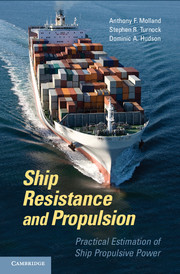Refine search
Actions for selected content:
5487 results in Thermal-fluids engineering
Brief Contents
-
- Book:
- Shock Wave-Boundary-Layer Interactions
- Published online:
- 05 June 2012
- Print publication:
- 12 September 2011, pp vii-viii
-
- Chapter
- Export citation
Frontmatter
-
- Book:
- Shock Wave-Boundary-Layer Interactions
- Published online:
- 05 June 2012
- Print publication:
- 12 September 2011, pp i-v
-
- Chapter
- Export citation
3 - Transonic Shock Wave???Boundary-Layer Interactions
-
-
- Book:
- Shock Wave-Boundary-Layer Interactions
- Published online:
- 05 June 2012
- Print publication:
- 12 September 2011, pp 87-136
-
- Chapter
- Export citation
6 - Experimental Studies of Shock Wave???Boundary-Layer Interactions in Hypersonic Flows
-
-
- Book:
- Shock Wave-Boundary-Layer Interactions
- Published online:
- 05 June 2012
- Print publication:
- 12 September 2011, pp 259-313
-
- Chapter
- Export citation
Index
-
- Book:
- Shock Wave-Boundary-Layer Interactions
- Published online:
- 05 June 2012
- Print publication:
- 12 September 2011, pp 459-461
-
- Chapter
- Export citation
9 - Shock-Wave Unsteadiness in Turbulent Shock Boundary-Layer Interactions
-
-
- Book:
- Shock Wave-Boundary-Layer Interactions
- Published online:
- 05 June 2012
- Print publication:
- 12 September 2011, pp 373-394
-
- Chapter
- Export citation
2 - Physical Introduction
-
-
- Book:
- Shock Wave-Boundary-Layer Interactions
- Published online:
- 05 June 2012
- Print publication:
- 12 September 2011, pp 5-86
-
- Chapter
- Export citation
Contributors
-
- Book:
- Shock Wave-Boundary-Layer Interactions
- Published online:
- 05 June 2012
- Print publication:
- 12 September 2011, pp xvii-xviii
-
- Chapter
- Export citation
5 - Ideal-Gas Shock Wave???Turbulent Boundary-Layer Interactions in Supersonic Flows and Their Modeling: Three-Dimensional Interactions
-
-
- Book:
- Shock Wave-Boundary-Layer Interactions
- Published online:
- 05 June 2012
- Print publication:
- 12 September 2011, pp 202-258
-
- Chapter
- Export citation
4 - Ideal-Gas Shock Wave???Turbulent Boundary-Layer Interactions (STBLIs) in Supersonic Flows and Their Modeling: Two-Dimensional Interactions
-
-
- Book:
- Shock Wave-Boundary-Layer Interactions
- Published online:
- 05 June 2012
- Print publication:
- 12 September 2011, pp 137-201
-
- Chapter
- Export citation
Contents
-
- Book:
- Shock Wave-Boundary-Layer Interactions
- Published online:
- 05 June 2012
- Print publication:
- 12 September 2011, pp ix-xvi
-
- Chapter
- Export citation
7 - Numerical Simulation of Hypersonic Shock Wave???Boundary-Layer Interactions
-
-
- Book:
- Shock Wave-Boundary-Layer Interactions
- Published online:
- 05 June 2012
- Print publication:
- 12 September 2011, pp 314-335
-
- Chapter
- Export citation

Ship Resistance and Propulsion
- Practical Estimation of Propulsive Power
-
- Published online:
- 07 September 2011
Appendix A4 - Tabulations of Propulsor Design Data
-
- Book:
- Ship Resistance and Propulsion
- Published online:
- 07 September 2011, pp 522-528
-
- Chapter
- Export citation
13 - Powering Process
-
- Book:
- Ship Resistance and Propulsion
- Published online:
- 07 September 2011, pp 296-312
-
- Chapter
- Export citation
11 - Propulsor Types
-
- Book:
- Ship Resistance and Propulsion
- Published online:
- 07 September 2011, pp 246-260
-
- Chapter
- Export citation
5 - Model-Ship Correlation
-
- Book:
- Ship Resistance and Propulsion
- Published online:
- 07 September 2011, pp 85-96
-
- Chapter
- Export citation
Index
-
- Book:
- Ship Resistance and Propulsion
- Published online:
- 07 September 2011, pp 529-537
-
- Chapter
- Export citation
7 - Measurement of Resistance Components
-
- Book:
- Ship Resistance and Propulsion
- Published online:
- 07 September 2011, pp 108-143
-
- Chapter
- Export citation
17 - Applications
-
- Book:
- Ship Resistance and Propulsion
- Published online:
- 07 September 2011, pp 418-472
-
- Chapter
- Export citation
